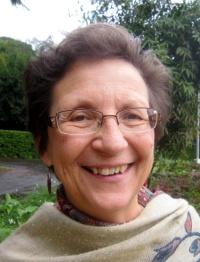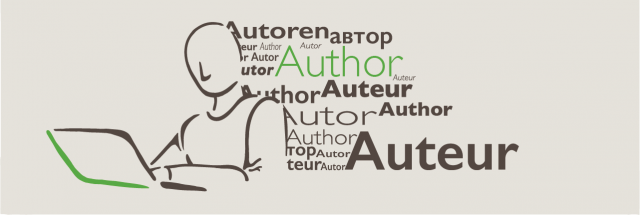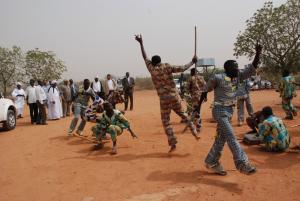 In the last week a video campaign called Kony 2012 has gone viral. At the time of posting this article, over 27 million around the world have viewed it on YouTube and many more on Vimeo and other video hosting sites. The campaign, by US-based 'Invisible Children'; calls for the arrest of Joseph Kony, head of the Lord's Resistance Army, who is indicted by the International Criminal Court. Jean Brown, from Australia, who is in touch with peacemakers in the areas impacted by Kony, offers her reflections:
In the last week a video campaign called Kony 2012 has gone viral. At the time of posting this article, over 27 million around the world have viewed it on YouTube and many more on Vimeo and other video hosting sites. The campaign, by US-based 'Invisible Children'; calls for the arrest of Joseph Kony, head of the Lord's Resistance Army, who is indicted by the International Criminal Court. Jean Brown, from Australia, who is in touch with peacemakers in the areas impacted by Kony, offers her reflections:
I have known about Joseph Kony for some time and have met various people working on his capture over the years. Early last year we met very fine Ugandans in Kampala working on the tough job of rehabilitation of children and families in the north of the country. Gulu is in recovery mode, we went through it in our bus on the way to South Sudan. It is now six years since Kony left that area. He moved into South Sudan and the Democratic Republic of the Congo. In the latter place jungles are thick and roads minimal I understand.
While the Ugandan Government no doubt has its own very mixed motives, part of their difficulty was fighting a man who surrounds himself with civilians and children. How do you fight your own children? I have heard stories far worse than any put in this video. A few years ago at the Initiatives of Change centre in Caux, Switzerland, I met a remarkable woman called Betty Bigombe, currently State Minister for Water Resources in Uganda. She was tasked with convincing the Lord's Resistance Army to lay down their arms, following the failure of military efforts to defeat them.
Bigombe initiated contact with Joseph Kony in 1993. She is from the same tribe, the Acholi. This began what would be known as ‘The Bigombe talks’. In 1993 she was named Uganda's Woman of the Year for her efforts to end the violence. (She herself has been the target of bullets and bombs). Despite meeting with Kony, the talks collapsed in February 1994. Soon afterward the insurgency intensified and no significant efforts towards peace would be made for the next decade.
Following a terrible massacre in February 2004, Bigombe took a leave of absence from the World Bank and flew to Uganda to attempt to restart the peace process. From March 2004 to 2005, Bigombe was the chief mediator in a new peace initiative with the LRA, personally financing much of the logistics of bringing Ugandan government ministers and rebel leaders together. The last meeting on April 20, 2005 also fell through. However, the failure of the Bigombe mediation is seen as laying the groundwork for the 2006–2007 Juba talks, which were mediated by the government of South Sudan. Sadly they too collapsed at the last minute when Joseph Kony refused to sign the peace agreement.
I met a Bishop in South Sudan who was part of a church team who were engaged in trying to work through his family to reach him. There are many, have been many, African efforts to reach him.
This may seem a lot of detail, but it is important to understand some background. Sometimes we think from outside that we know best and fail to respect the strategies of those on the ground. Clearly in this case those on the ground have failed after so many years and after so much suffering, but still they are the best placed in the long run to tackle him. There are many mixed African reactions to the Kony 2012 campaign and it is worth looking up what they have to say. There is some fear that this campaign may cause retaliatory strikes by Kony.
At some point the Ugandan government issued a general amnesty for those of Kony’s army. Some were tempted to give themselves up, sickened at what they were part of, but then in 2005, the ICC in the Hague issued their warrant for not only Kony’s arrest but also Kony’s cronies. This of course overruled the amnesty and scared them back into the jungle. Betty felt that the ICC rushed too much and the Catholic Archbishop of Gulu, Odama, reckoned it set the peace process right back. Odama and other Acholi religious and political leaders continue to press for traditional justice, a process involving confessions of guilt, cleansing rituals, and the eventual acceptance of LRA members back into communities. They of course are looking at long term rehabilitation not just the capture or death of one man.
Actually the LRA is much smaller than previously thought. It does not have 30,000 child soldiers. The figure of 30,000 refers to the total number of children abducted by the LRA over nearly 30 years. Still horrific no doubt.
Kony’s original issue was with the Ugandan government and wanting a better deal for his people and an ending of atrocities being perpetrated against them. Weird, isn’t it, that he should then go on to do even worse things. He also wanted to found a state on the Ten Commandments. It seems he has a messianic complex and turned completely to the dark side. This madness seems to accompany distorted egos and absolute power.
Another thing for us to keep asking ourselves is where do his weapons come from? A few African countries manufacture small arms. Illegal arms trafficking is the most profitable trade in the world. The largest sales are from China, France, the UK and the USA and so on. I will always remember a very bitter Ugandan Muslim woman staring at me after a conversation about conflicts in Africa and saying 'And who do you think gives us the guns'
A multitude of complex issues in which Kony may or may not be a pawn himself includes things like the discovery of oil on the borders of Uganda and the DRC. Unscrupulous interests are often invested in keeping countries destabilised and preoccupied and these interests are not all African by any means. Economic and social hardships throughout the region all need urgently to be addressed and the rest of the world can surely find culturally appropriate ways to continue to aid development.
Another ingredient in the region is an ore called Columbite-tantalite - coltan for short. When refined you get one of the world's most sought-after materials used in mobile phones, stereos, computer chips etc: The demand for this is helping to fuel a bloody civil war in the Democratic Republic of Congo where many agencies are involved in illegal, competitive mining operations.
I appreciate the huge energy and gathering of so many around this Kony campaign and maybe it will work some magic. T shirts and wrist bands will earn a good amount of money for someone, but may only serve to make us feel good while Kony remains bad. But I also know how delightful it is to have an enemy - out there - whose face you recognise and whose name you can shout. Good to recognise evil - which this is. Harder to face it within. The Western world has a stock of evil, historical and current, to address in the jungles of our own backyards. Every evil in the world is multi-dimensional and twists and turns through many current and historic grievances, so I would urge deeper study, and for each of us there may be a corner of the puzzle that we can engage directly with.
Jean Brown lives in South Australia. She is particularly engaged in the development and introduction of Creators of Peace Circles around the world and other programmes of Initiatives of Change, especially Action For Life.
NOTE: Individuals of many cultures, nationalities, religions, and beliefs are actively involved with Initiatives of Change. These commentaries represent the views of the writer and not necessarily those of Initiatives of Change as a whole.


